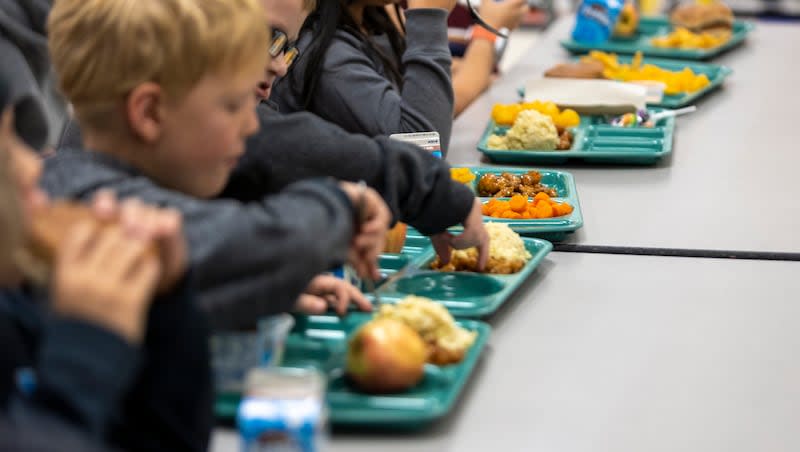New school lunch rules limit sugar for first time

School lunches are about to get a makeover that includes less sugar and more flexibility with meal planning. Locally produced foods will be emphasized. And sodium will be reduced slightly.
The U.S. Department of Agriculture on Thursday announced the changing nutrition standards for school meals that will phase in and be complete by fall of 2027.
“We all share the goal of helping children reach their full potential,” said Agriculture Secretary Tom Vilsack in a written statement. “Like teachers, classrooms, books and computers, nutritious school meals are an essential part of the school environment, and when we raise the bar for school meals, it empowers our kids to achieve greater success inside and outside of the classroom. Expanding on this major milestone, the Biden-Harris administration will continue to partner with schools, districts, states and industry to build on the extraordinary progress made to strengthen school meals.”
Affected will be K-12 schools, which together serve breakfasts and lunches to close to 30 million children every school day. In a release, the department said that the meals are “the main source of nutrition for more than half of these children and help improve child health.”
It’s estimated the U.S. spends about $22.6 billion a year on the school meal program.
The revision is part of a national effort to improve nutrition for American children, many of whom are overweight and could suffer health consequences that are related. Experts also say that healthy diets improve how well children develop, grow and learn. But the Centers for Disease Control and Prevention reported that nearly 1 in 5 U.S. children and adolescents have obesity. In a study of kids from 2017-2020, “Obesity prevalence was 12.7% among 2- to 5-year-olds, 20.7% among 6- to 11-year-olds, and 22.2% among 12- to 19-year-olds.”
The report noted that obesity-related conditions include high blood pressure, high cholesterol, Type 2 diabetes, breathing problems and joint problems. Experts have also reported that they are seeing health conditions related to being overweight in people at a much younger age than in the past.
Remaking school lunch
Specific changes to the school meals program:
Sugar. Added sugars will be limited in phases, with full implementation by fall 2027. Phase 1 will put limits in high-sugar products like cereals, yogurt and flavored milk. Phase 2 will have overall weekly limits.
Milk. Schools can offer both flavored and unflavored milk, but there will be new limits on added sugars in flavored milk by fall 2025. “Thirty-seven school milk processors — representing more than 90% of the school milk volume nationwide — have already committed to providing nutritious school milk options that meet this limit on added sugars,” the announcement said.
Sodium. The reduction, however, will be a single reduction, rather than three incremental reductions as proposed last year.
The standards for whole grains will not change, nor will the effort to ensure that children get plenty of fruits and vegetables.
But more effort is being made to accommodate food preferences. The announcement said that, “while not a new requirement, starting in fall 2024 it will be easier for schools to serve protein-rich breakfast foods such as yogurt, tofu, eggs, nuts and seeds, which can help reduce sugary food options, while also supporting vegetarian diets and other food preferences.”
Schools will also have the option to require that “unprocessed agricultural products be locally grown, raised or caught” when buying them for school meal programs, starting next fall. The following year, they will “have limits on the percentage of non-domestic grown and produced foods they can purchase, which will enhance the role of American farmers, producers, fishers and ranchers in providing nutritious foods to schools.”
USDA said the rule took seriously public feedback in a meal makeover process that began in February 2022. “USDA worked hand-in-hand with schools, industry, students, parents and others to gather input, including formal comment periods, conferences, listening sessions and more, which is incorporated in the final rule.”

